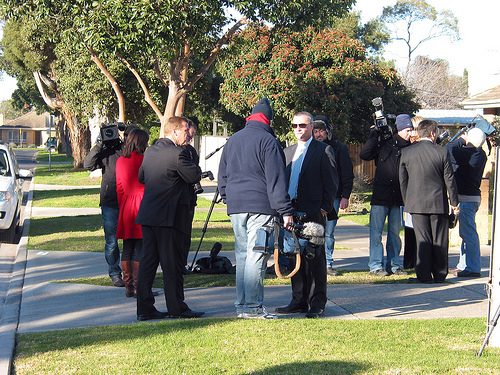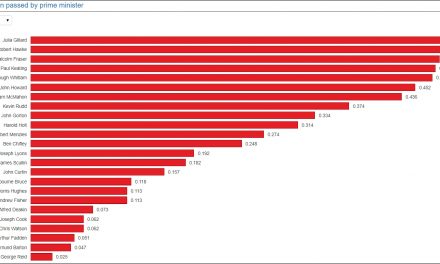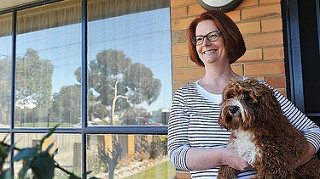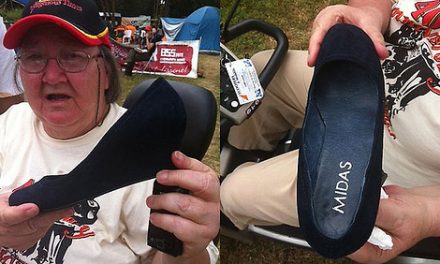24 June 2010 is an important date in the annals of Altona’s history for it is on this day that Julia Gillard, an Altona resident, became the first female Prime Minister of Australia. On that morning, I went to work early as usual, with no knowledge that a political earthquake had taken place. On arriving at my office, I visited The Age’s website as usual and was shocked by the headline news that Kevin Rudd was superseded by his deputy in an uncontested coup. I immediately phoned home to inform my wife of this news. She already knew, but not through the media. She told me our neighbourhood was a hive of activity. Journalists from all corners of Melbourne had swooped upon this otherwise quintessentially quiet street. Vehicles from TV channels and newspapers were driving up and down this street incessantly throughout the whole day. If I had left my house later that morning, I would have witnessed this once-in-a-lifetime scene and would have captured the moments on film, for the posteriority of Altona.
The irony is that Julia Gillard would not be at home in Altona, for she would be at the epicentre of the political drama that was unfolding in Canberra. The target of the media is not Julia Gillard but rather the common folks along this street. The journalists knocked on the houses, one by one, with the hope of uncovering new revelations about the new Prime Minister. My wife greeted the journalist at the door in her pyjamas and was told to change into something more presentable for an interview.
The decision by Julia Gillard of not moving immediately into the lodge until given the mandate by the electorate had unintentionally extended the media’s attention on Altona and this street. The seismic shockwaves triggered by this political earthquake had changed the Australian political landscape. Its effects on this street had also lasted a good while, with journalists visiting it the next few days and intermittently after. Joy and her husband, the next-door neighbours of Julia and with whom we have a close relationship, were catapulted into stardoms, having received many interviews from different newspapers and TV channels.
I was too interviewed by SBS on the subsequent Saturday while out at my front garden. I later learnt from my colleague that she saw my interview during the 6.30 p.m. news slot. Though SBS has a later 9.30 p.m. news slot on weekdays, it does not schedule one on Saturdays. Hence, I have completely missed out seeing myself on TV. Last Sunday, someone whom I just know for the first time said that he saw me on T.V. I believe the interview must have lasted just a fleeting few minutes. Hence, I am very surprised that someone who has not known me before would take notice and even recall it later. This is in fact the second time someone has pointed to me my TV appearance – the first time was by the owner of a grocery shop in Footscray, which I have frequently patronized.
On 23 August 2010, journalists again flocked to this street, in the aftermath of the General Election. Unlike 24 June 2010, when a mood of shock, disbelief and expectation pervades, an atmosphere of uncertainty now lingers in the air. I had the fortune of taking photographs of the vehicles and journalists congregating on this street. However, according to my wife, this street phenomenon is of a much reduced scale compared to that on 24 June 2010. Perhaps, the predictability of the election outcomes has taken much novelty out of the news coverage, rendering the news less sensational and less worthy of earnest pursuits.
A newspapers commentator said that Julia Gillard has put Altona on the World Map, just like what Bill Clinton had done to Little Rock of Arkansas. Now that Julia Gillard has moved to the Lodge, the media’s interest in both Altona and this street has correspondingly subsided and would eventually cease.
Should we rename this street to Julia Street, in honour of the first female Prime Minister of Australia? After all, the title as the first female PM does not come easily – it takes Australia 109 years and governance under 26 previous male Prime Ministers to achieve this symbol of Australian society arriving in gender equality at the zenith. It is also uncommon for people who have reached her status and achievements to continue living in such an unassuming house and neighbourhood. Naming streets after distinguished persons are not unprecedented. For example, there is a Steve Bracks Promenade, named in honour of Steve Bracks, the former Victorian Premier, in neighbouring Williamstown. Regardless of the name, this street has become synonymous with Julia Gillard and has inherited a story to tell to future generations.
Her house number in Chinese symbolizes longevity. I earnestly hope she will keep her house and by doing so, I believe the good fengshui will bring longevity to her government as well.






Re: "Naming streets after distinguished persons are not unprecedented. For example, there is a Steve Bracks Promenade, named in honour of Steve Bracks".
"Steve Bracks Promenade" is only the name of the path, the footpath or shared pathway on the side of the road between the road and the beach. It is not the name of the street.
Thanks for pointing out. I also remember reading somewhere that there is a rule that prohibits streets being named after living persons in Victoria.